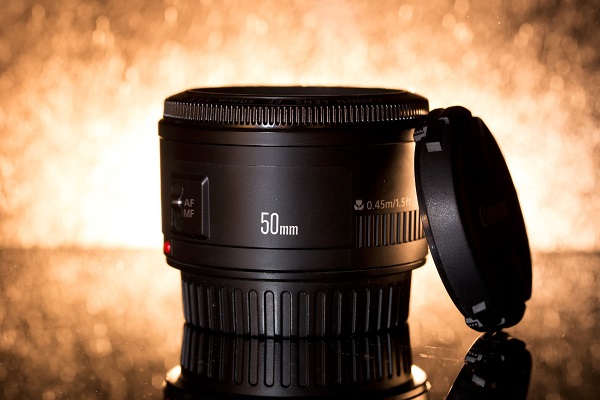How to Shoot a YouTube Video

YouTube is a platform that has revolutionized the way we watch and share videos. It has become an important platform for content creators to showcase their work and reach a global audience. Whether you are a beginner or an experienced videographer, it is crucial to understand the basics of shooting a high-quality video for YouTube.
In this blog post, we will provide you with essential tips and tricks to help you create a great-looking video for YouTube. Whether you want to create a vlog, a tutorial, or an entertaining video, our tips will help you make the most of your production skills and equipment.
- Plan Your Video Content
- Invest in Quality Equipment
- Create a Consistent Shooting Style
- Use Natural Lighting
- Capture High-Quality Audio
- Edit Your Video
- Optimize Your Video for YouTube
- That’s a Wrap on Your YouTube Video
- How to Shoot a YouTube Video FAQ
1. Plan Your Video Content
Before you start shooting your video, it is important to plan the content of your video. This will help you determine what equipment you will need and what shots you want to include. You should also have a clear understanding of the story you want to tell, as this will help you to create a compelling video that holds your audience's attention.
2. Invest in Quality Equipment
Having the right equipment is essential for producing high-quality videos for YouTube. You don't need to have the most expensive equipment, but it is important to invest in a good camera and a tripod to stabilize your shots. Additionally, consider investing in a high-quality microphone to capture clear audio. You may also want to consider purchasing lighting equipment, especially if you plan on shooting in low-light conditions.

3. Create a Consistent Shooting Style
Having a consistent shooting style is important for creating professional-looking videos. This includes using a tripod to stabilize your shots, and using a slider or a gimbal to create smooth and steady movements. Additionally, consider using a wide-angle lens to capture more of the environment and create a sense of depth.

4. Use Natural Lighting
Using natural lighting is a great way to enhance the look of your video. If you're shooting outside, try to film during the golden hour, which is the hour before sunset and after sunrise. If you're shooting indoors, try to position your camera near a window to take advantage of the natural light. You can also use reflectors to control and redirect the light to where you need it.

5. Capture High-Quality Audio
Capturing high-quality audio is essential for creating a professional-looking video. If you're shooting a vlog or a tutorial, consider investing in a high-quality microphone to capture clear audio. You may also want to consider using an audio recorder to capture high-quality audio separately from your video. This will give you more control over the audio in post-production.
6. Edit Your Video
Editing your video is an important part of the production process. This is where you can refine your shots, add visual effects, and create a polished final product. There are many video editing software options available, including Adobe Premiere Pro, Final Cut Pro, and PowerDirector 365. Choose the software that works best for you and your budget.
Our Top Pick For Best YouTube Video Editor - PowerDirector 365
PowerDirector is a top-choice, all-encompassing video editor for YouTube. Equipped with a range of sophisticated tools and features that cater to every level of expertise, it is user-friendly and enables you to quickly produce professional-looking videos for YouTube.
7. Optimize Your Video for YouTube
To ensure your video is seen by as many people as possible, it's important to optimize your video for YouTube. This includes adding keywords to your video's title, description, and tags to help it rank higher in YouTube's search results. Additionally, consider adding captions to your video to make it accessible to a wider audience.
That’s a Wrap on Your YouTube Video
In conclusion, shooting a video for YouTube requires a combination of creativity and technical skills. By following these tips and tricks, you will be able to create high-quality videos that will engage and entertain your audience. Whether you're a beginner or an experienced videographer, if you follow this guide and practice you will be making viral videos in no time.
How to Shoot a YouTube Video FAQ
1. What do you need to shoot a YouTube video?
To shoot a YouTube video, you will need the following equipment and tools:
- Camera: A digital camera or a smartphone camera can be used to shoot a YouTube video.
- Tripod: A tripod is essential for stabilizing your shots and avoiding shaky footage.
- Lighting: Good lighting can make a big difference in the quality of your video. Consider using natural light or investing in lighting equipment.
- Microphone: Capturing high-quality audio is important for creating a professional-looking video. Consider investing in a high-quality microphone or using an audio recorder.
- Editing software: Video editing software is used to refine your shots, add visual effects, and create a polished final product. Examples of video editing software include Adobe Premiere Pro, Final Cut Pro, and PowerDirector.
- Other accessories: Depending on your specific needs, you may also want to invest in other accessories such as a slider or gimbal for smooth camera movements, or a wide-angle lens to capture more of the environment.
It's also important to plan your video content and have a clear understanding of the story you want to tell. This will help you to create a compelling video that holds your audience's attention.
2. How do you shoot a YouTube video on your phone?
Here are the steps to shoot a YouTube video on your phone:
- Plan your content: Decide on the topic of your video and create a script or outline. Consider the lighting and environment you will be filming in, and gather any props or equipment you will need.
- Adjust your camera settings: Open the camera app on your phone and adjust the settings to suit your needs. For example, you may want to switch to video mode and adjust the focus, exposure, and white balance.
- Mount your phone: Consider using a tripod or other stabilizing device to ensure your shots are steady. You can also use a tripod mount adapter to attach your phone to a tripod.
- Check your lighting: Make sure you have adequate lighting for your shot. If necessary, add extra lights or adjust the position of existing lights to improve the look of your video.
- Record your video: Start recording your video, speaking clearly and naturally. Try to keep the camera steady and make sure the subject is in focus.
- Review and edit: After recording, review your footage and edit as necessary. You can use a simple video editing app on your phone to trim and splice your footage, add text or music, and make other adjustments.
- Upload to YouTube: When you're satisfied with your video, upload it to YouTube by selecting the "Upload" option on the app or website. Fill in the necessary information, such as the video's title, description, and tags, and then click "Publish."
Remember to keep your video engaging, by telling a story, adding humor, and making use of other elements that will hold your audience's attention.
3. How to record a video on YouTube?
- Go to YouTube.com: Open a web browser and navigate to YouTube.com.
- Sign in to your account: If you haven't already, sign in to your YouTube account. If you don't have an account, you'll need to create one before you can upload videos.
- Go to the Creator Studio: Click on your profile picture in the top right corner of the screen and select "YouTube Studio" from the drop-down menu. This will take you to the Creator Studio, where you can manage your channel and upload videos.
- Click on the "Upload" button: On the left side of the screen, click on the "Videos" tab and then click on the "Upload" button.
- Select a video file: A file upload window will appear. Browse your files and select the video you want to upload to YouTube. You can select multiple videos if you want to upload them all at once.
- Fill in the video information: After selecting your video file(s), you'll be taken to a page where you can enter information about your video, such as the title, description, and tags. Make sure you enter relevant information that will help your video be discovered by viewers.
- Choose a thumbnail: A thumbnail is a still image that represents your video. You can choose a thumbnail from one of the frames of your video or upload a custom image.
- Set video privacy: You can set your video's privacy setting to "Public," "Unlisted," or "Private." If you choose "Public," anyone will be able to find and view your video. If you choose "Unlisted," only people with the link to the video can view it. If you choose "Private," only you and your selected YouTube users can view the video.
- Click "Publish": Once you've entered all the information for your video, click the "Publish" button to upload it to YouTube. The uploading process may take several minutes, depending on the size of your video and the speed of your internet connection.
After your video has been uploaded, you can continue to manage and promote it from the Creator Studio. This includes adding annotations, creating playlists, and optimizing your video for search engines.










